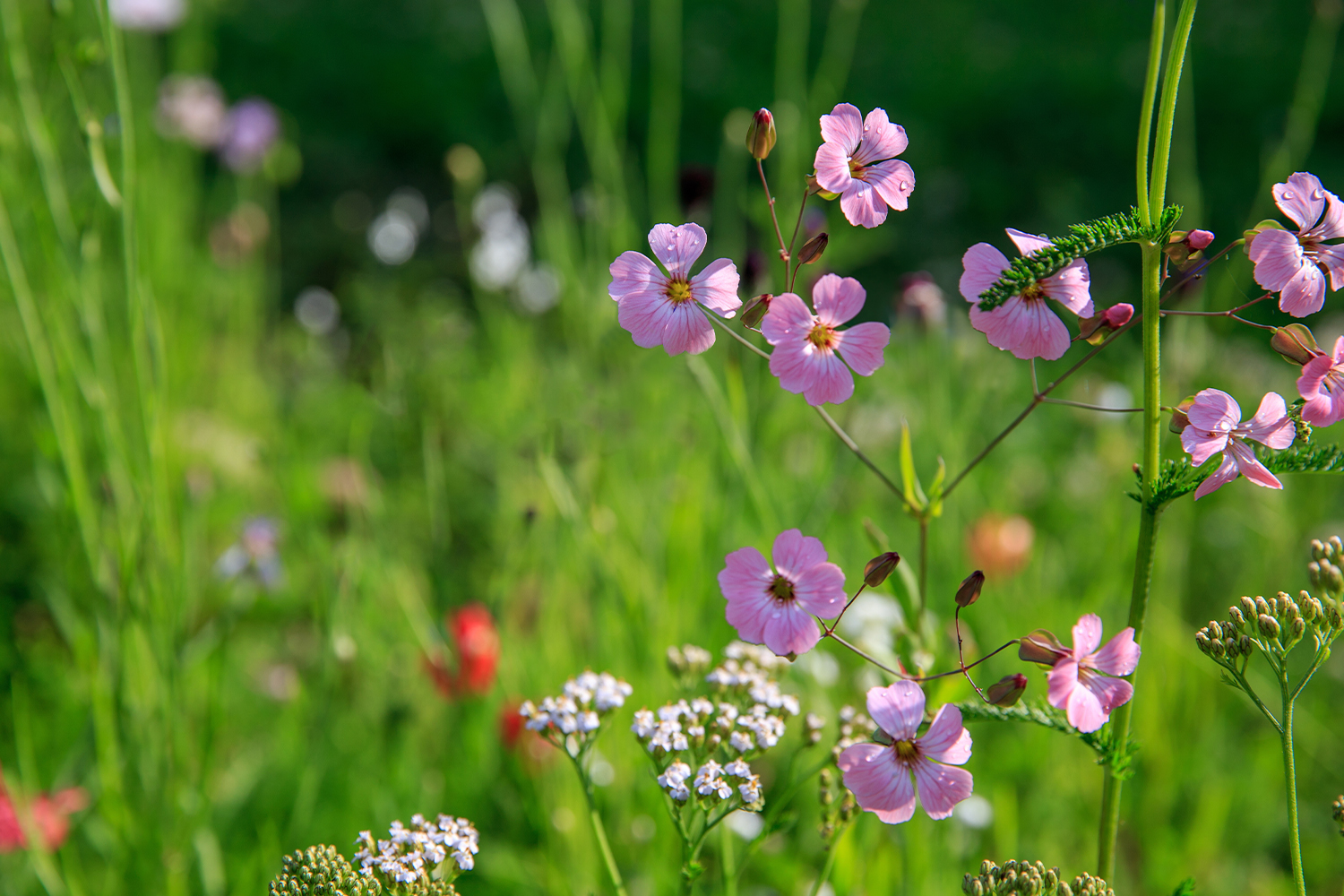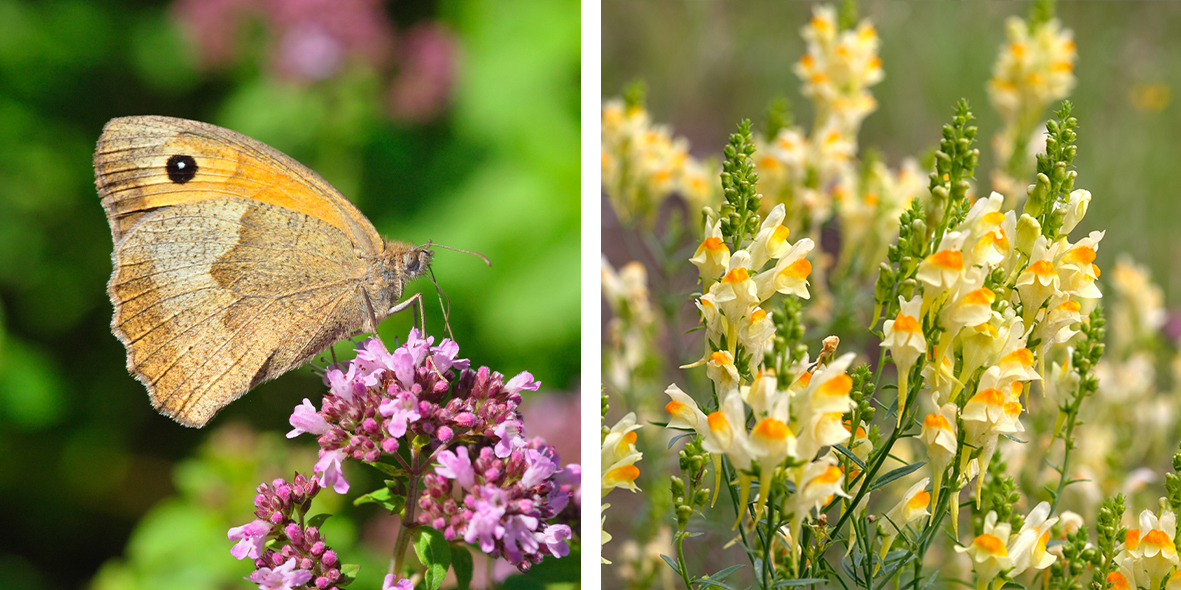MobiRoof ECO Sedum & WildFlower helps preserve native species
31 July 2023The concept of green roofs has gained increasing popularity in recent years. Besides contributing to improved insulation and aesthetic value, green roofs have important biodiversity benefits to offer. MobiRoof ECO Sedum & WildFlower uses native wildflowers and herbs on the roof. This variety of home-grown species contributes even more to climate adaptation.
Wild plants on the roof for pollinators
Green roofs are a popular choice for both individuals and businesses striving for sustainable and environmentally friendly solutions. A green roof offers a range of benefits for the environment and residents. Adding native wildflowers and herbs adds to these biodiversity benefits. They are important for interacting with insects, birds and soil life. They also add value in terms of scent and colours. Wild flowers thereby attract pollinators such as bees and butterflies, which are essential for pollination of our crops and plants and support the food chain. In the long run, without pollinators, there is no food for humans either. Offering wild, native species as host plants or food sources helps maintain these important insect populations.

Nursery for the gatekeeper butterfly
The plants in the new Sedum & WildFlower mix contain both the host plant and food source for several insects. For example the adult gatekeeper, or Hedge Brown (Pyronia tithonus) likes to eat the nectar from Oregano. This butterfly species is usually seen where clusters of flowers grow in gateways and along hedgerows and field edges, which is not often the case in inhabited area. The caterpillar of this species overwinters in grass tussocks such as Red Fescue and eats from these again in spring. For the Small Copper (Lycaena phlaeas) on the other hand, Sour dock, or Rumex acetosella, is the preferred host plant. Furthermore, Silene vulgaris acts as a host plant for the netted pug (Eupithecia venosata), a moth species that depends on this plant.
The importance of native flora and fauna
Flowers and plants occur naturally in a particular area (indigenous) and have adapted to local conditions. For centuries, insects, from beetle to butterfly, have co-evolved with plants on local territory. That is, they have adapted to each other to benefit from each other. For example, in terms of pollination and nectar, which contains just the right composition of nutrients to make the insect more resistant to parasites and diseases. However, this also means that some species depend on each other. If a plant species is dominated and driven out by a colourful exotic specimen, an insect species may also disappear as a result. Moreover, native flowers provide a suitable habitat for other animals, such as small mammals and amphibians, and the insects in turn also provide food for birds. This promotes a balanced ecological environment.

Difference between host plant and nectar plant
Host plants provide food and nesting opportunities for insects and caterpillars. They are specific plant species on which caterpillars live before pupating. Many caterpillar species eat only a few species of plants, with each caterpillar sort having its own preference. Butterflies deposit their eggs on these plants to ensure that the caterpillars have enough to eat immediately when they hatch. Host plants, as an integral part of the life cycle, are thus essential for the reproduction of several butterfly species. Plants that serve purely as a food source for adult butterflies are called nectar plants. These are not of value to caterpillars but provide food to insects through nectar and pollen.
Sedum & WildFlower grows in fully recyclable cassettes
MobiRoof ECO Sedum & WildFlower consists of a unique lightweight cassette system equipped with substrate. This special substrate ensures drainage and storage of water and has the function of a growth medium. The cassette is planted with various types of sedum plants and 21 native wildflowers and herbs such as Yarrow, Chives, Cushion Calamint, Deptford pink, Sheep’s fescue and more. The cassettes are easily ‘clicked’ together and are also movable. They can even be cut in half, allowing the sedum roof to be completely customised. MobiRoof ECO is circular; the cassette is made of recycled material and is fully recyclable. This reduces pressure on the environment and limits waste streams. The cassettes are grown on our own soil with cuttings from our own nursery.
 Sustainability and environmental friendliness
Sustainability and environmental friendliness
MobiRoof ECO Sedum & WildFlower contributes to a healthier and resilient environment, and the preservation of local ecosystems. Because native plants naturally thrive in our environment, they are stronger and do not need artificial pesticides and chemicals. This helps reduce the chemical load on soil and groundwater. Moreover, wildflowers on a green roof do not require exhaustive cultivation methods, such as intensive fertilisation or irrigation, contributing to a more balanced and natural environment.
Sedum & WildFlower helps biodiversity
Using MobiRoof ECO Sedum & WildFlower on the roof promotes biodiversity by providing a habitat for various plant and animal species. Creating a green roof with wildflowers, herbs and sedum helps preserve native flora and fauna, and helps protect endangered species. The mix also adds colour, texture and diversity to a garden or business park, making it more attractive and vibrant. Space users enjoy a natural-looking environment that is in harmony with nature while playing an important role in preserving local flora and fauna.


